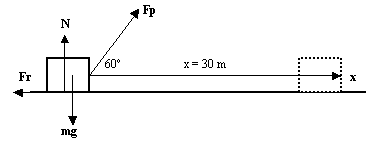Energy, Work, Power: Concepts.
Written on 19.01 by sianturikomkom
Energy Concepts and Definitions-
Energy is one of the most importants concepts in all physics fields and in other sciences.The energy has the universal property of being constant. It is not created nor destroyed. Its quantity always remains constant and is never lost; the energy just changes into other forms of energy (heat, light, electricity, etc) with its total quantity balance remaining constant. This explain its importance.
Energy can be defined in a traditional way, although not universally correct, as "the capacity of doing work". This simple definition is not very precise nor valid for all kinds of energy, like energy associated to heat, but it is fully correct for the mechanical energy as described below; that will allow us to understand the close relation between work and energy.
But, what is it understood by work? In daily language has many differents meanings. In Physics has a very precise meaning: to describe what is obtained through the action of a force that moves or displaces over a certain distance.
The work done by a constant force, in magnitude as in direction, is defined as: "the product of the magnitude of displacement with the component of the force parallel to the displacement".
In form of equation:
 .
. W=Fdcos
Let's see an exercise.
A 40 kg box is dragged 30 m on a horizontal floor, applying a Fp = 100 N exerted by a person. Such force acts doing a 60º angle. The floor exerts a friction force Fr = 20 N. Calculate the work done for each one of these forces Fp, Fr, the weight mg and the normal. Calculate also the net work done on the box.

The work done by mg and the normal N is zero, because they are perpendicular to displacement(
The work done by Fp is:
Wp = Fp x cos
The work done by the friction force Fr is:
Wr = Fr x cos180º = (20 N)(30 m)(-1) = -600 J.
The angle between Fr and displacement is 180º because they point in opposite directions.
The net work can be calculated in two equivalents ways:
- As the algebraic sum of the work done by each force:
WNET = 1500 J +(- 600 J) = 900 J. - Finding first the net force on the object along the displacement:
F(NET)x= Fpcos - Fr
- Fr
and then doing
WNET = F(NET)x = (Fpcos - Fr)x
- Fr)x
= (100 Ncos60º - 20 N)(30 m) = 900 J.

